The domestic guinea pig plays an important role in folk culture for many indigenous Andean groups, especially as a food source, but also in folk medicine and in community religious ceremonies. Guinea pigs are a culinary staple in the Andes Mountains, where they are known as cuy, a name also given to large animals, the result of a breeding program, that ended up in southern California. Since the 1960s, efforts have been made to increase consumption of the animal outside South America.
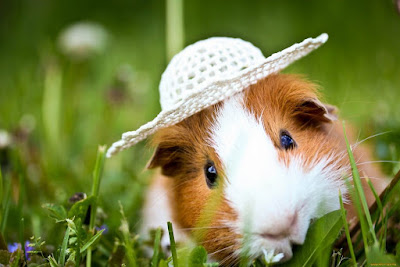 In Western societies, the domestic guinea pig has enjoyed widespread popularity as a household pet, a type of pocket pet, ever since its introduction by European traders in the 16th century. Their docile nature; friendly, even affectionate responsiveness to handling and feeding; and the relative ease of caring for them continue to make guinea pigs a popular choice of pet. Organizations devoted to competitive breeding of guinea pigs have been formed worldwide, and many specialized breeds with varying coat colors and textures are selected by breeders.
In Western societies, the domestic guinea pig has enjoyed widespread popularity as a household pet, a type of pocket pet, ever since its introduction by European traders in the 16th century. Their docile nature; friendly, even affectionate responsiveness to handling and feeding; and the relative ease of caring for them continue to make guinea pigs a popular choice of pet. Organizations devoted to competitive breeding of guinea pigs have been formed worldwide, and many specialized breeds with varying coat colors and textures are selected by breeders.
Biological experimentation on guinea pigs has been carried out since the 17th century. The animals were frequently used as model organisms in the 19th and 20th centuries, resulting in the common epithet "guinea pig" for a test subject, but have since been largely replaced by other rodents such as mice and rats. They are still used in research, primarily as models for human medical conditions such as juvenile diabetes, tuberculosis, scurvy, and pregnancy complications.
History
The guinea pig was first domesticated as early as 5000 BC for food by tribes in the Andean region of South America (the present-day southern part of Colombia, Ecuador, Peru, and Bolivia), some thousands of years after the domestication of the South American camelids. Statues dating from circa 500 BC to 500 AD that depict guinea pigs have been unearthed in archaeological digs in Peru and Ecuador. The Moche people of ancient Peru worshipped animals and often depicted the guinea pig in their art. From about 1200 AD to the Spanish conquest in 1532, selective breeding resulted in many varieties of domestic guinea pigs, which form the basis for some of the modern domestic breeds. They continue to be a food source in the region; many households in the Andean highlands raise the animal, which subsists on the family's vegetable scraps. Folklore traditions involving guinea pigs are numerous; they are exchanged as gifts, used in customary social and religious ceremonies, and frequently referenced in spoken metaphors. They also play a role in traditional healing rituals by folk doctors, or curanderos, who use the animals to diagnose diseases such as jaundice, rheumatism, arthritis, and typhus. They are rubbed against the bodies of the sick, and are seen as a supernatural medium. Black guinea pigs are considered especially useful for diagnoses. The animal also may be cut open and its entrails examined to determine whether the cure was effective. These methods are widely accepted in many parts of the Andes, where Western medicine is either unavailable or distrusted.
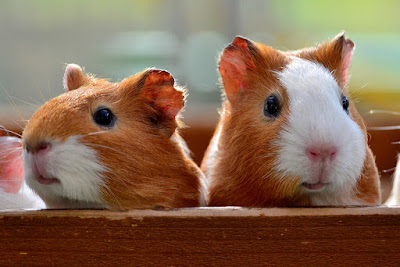 Spanish, Dutch, and English traders brought guinea pigs to Europe, where they quickly became popular as exotic pets among the upper classes and royalty, including Queen Elizabeth I. The earliest known written account of the guinea pig dates from 1547, in a description of the animal from Santo Domingo; because cavies are not native to Hispaniola, the animal was earlier believed to have been introduced there by Spanish travelers. However, based on more recent excavations on West Indian islands, the animal must have been introduced by ceramic-making horticulturalists from South America to the Caribbean around 500 BC, and it was present in the Ostionoid period, for example, on Puerto Rico, long before the advent of the Spaniards. The guinea pig was first described in the West in 1554 by the Swiss naturalist Conrad Gessner. Its binomial scientific name was first used by Erxleben in 1777; it is an amalgam of Pallas' generic designation (1766) and Linnaeus' specific conferral (1758). The earliest known illustration of a domestic guinea pig is a painting (artist unknown) in the collection of the National Portrait Gallery in London, dated to 1580, which shows a girl in typical Elizabethan dress holding a tortoise-shell guinea pig in her hands; she is flanked by her two brothers, one of whom holds a pet bird. The picture dates from the same period as the oldest recorded guinea pig remains in England, which are a partial cavy skeleton found at Hill Hall, an Elizabethan manor house in Essex, and dated to around 1575.
Spanish, Dutch, and English traders brought guinea pigs to Europe, where they quickly became popular as exotic pets among the upper classes and royalty, including Queen Elizabeth I. The earliest known written account of the guinea pig dates from 1547, in a description of the animal from Santo Domingo; because cavies are not native to Hispaniola, the animal was earlier believed to have been introduced there by Spanish travelers. However, based on more recent excavations on West Indian islands, the animal must have been introduced by ceramic-making horticulturalists from South America to the Caribbean around 500 BC, and it was present in the Ostionoid period, for example, on Puerto Rico, long before the advent of the Spaniards. The guinea pig was first described in the West in 1554 by the Swiss naturalist Conrad Gessner. Its binomial scientific name was first used by Erxleben in 1777; it is an amalgam of Pallas' generic designation (1766) and Linnaeus' specific conferral (1758). The earliest known illustration of a domestic guinea pig is a painting (artist unknown) in the collection of the National Portrait Gallery in London, dated to 1580, which shows a girl in typical Elizabethan dress holding a tortoise-shell guinea pig in her hands; she is flanked by her two brothers, one of whom holds a pet bird. The picture dates from the same period as the oldest recorded guinea pig remains in England, which are a partial cavy skeleton found at Hill Hall, an Elizabethan manor house in Essex, and dated to around 1575.
Traits and Environment
Guinea pigs are large for rodents, weighing between 700 and 1,200 g (1.5 and 2.6 lb), and measuring between 20 and 25 cm (8 and 10 in) in length. Modern breeding of cuy guinea pigs has resulted in animals weighing 2,700 grams (6.0 lb). They live an average of four to five years, but may live as long as eight years. According to the 2006 Guinness World Records, the longest living guinea pig survived 14 years, 10.5 months.
In the 1990s, a minority scientific opinion emerged proposing that caviomorphs, such as guinea pigs, chinchillas, and degus, are not rodents and should be reclassified as a separate order of mammals (similar to lagomorphs). Subsequent research using wider sampling restored the consensus among mammalian biologists regarding the current classification of rodents as monophyletic.
Natural Habitat
C. porcellus is not found naturally in the wild; it is likely descended from closely related species of cavies, such as C. aperea, C. fulgida, and C. tschudii, which are still commonly found in various regions of South America. Studies from 2007–2010 applied molecular markers and studied the skull and skeletal morphology of current and mummified animals, thereby revealing the ancestor to most likely be Cavia tschudii. Some species of cavy identified in the 20th century, such as C. anolaimae and C. guianae, may be domestic guinea pigs that have become feral by reintroduction into the wild. Wild cavies are found on grassy plains and occupy an ecological niche similar to that of cattle. They are social, living in the wild in small groups that consist of several females (sows), a male (boar), and the young (which, in a break with the preceding porcine nomenclature, are called "pups" not "piglets"). They move together in groups (herds) eating grass or other vegetation, and do not store food. While they do not burrow themselves or build nests, they frequently seek shelter in the burrows of other animals, as well as in crevices and tunnels formed by vegetation. They tend to be most active during dawn and dusk (crepuscular), when it is harder for predators to spot them.
Domestic Habitat
Domesticated guinea pigs thrive in groups of two or more; groups of sows, or groups of one or more sows and a neutered boar are common combinations, but boars can sometimes live together. Guinea pigs learn to recognize and bond with other individual pigs, and testing of boars shows their neuroendocrine stress response is significantly lowered in the presence of a bonded female when compared to the presence of unfamiliar females. Groups of boars may also get along, provided their cage has enough space, they are introduced at an early age, and no females are present. Domestic guinea pigs have developed a different biological rhythm from their wild counterparts, and have longer periods of activity followed by short periods of sleep in between. Activity is scattered randomly throughout the day; aside from an avoidance of intense light, no regular circadian patterns are apparent.
Domestic guinea pigs generally live in cages, although some owners of large numbers of guinea pigs dedicate entire rooms to their pets. Cages with solid or wire mesh floors are used, although wire mesh floors can cause injury and may be associated with an infection commonly known as bumblefoot (ulcerative pododermatitis). "Cubes and Coroplast" (C&C) style cages are now a common choice. Cages are often lined with wood shavings or a similar material. Bedding made from red cedar (Eastern or Western) and pine, both softwoods, were commonly used in the past, but these materials are now believed to contain harmful phenols (aromatic hydrocarbons) and oils. Safer bedding materials made from hardwoods (such as aspen), paper products, and corn cob materials are other alternatives. Guinea pigs tend to be messy within their cages; they often jump into their food bowls or kick bedding and feces into them, and their urine sometimes crystallizes on cage surfaces, making it difficult to remove. After its cage has been cleaned, a guinea pig typically urinates and drags its lower body across the floor of the cage to mark its territory. Male guinea pigs may also mark their territory in this way when they are taken out of their cages.
Guinea pigs do not generally thrive when housed with other species. Housing guinea pigs with other rodents such as gerbils and hamsters may increase instances of respiratory and other infections, and such rodents may act aggressively toward the guinea pig. Larger animals may regard guinea pigs as prey, though some (such as dogs or cats) can be trained to accept them. Opinion is divided over the cohousing of guinea pigs and domestic rabbits. Some published sources say that guinea pigs and rabbits complement each other well when sharing a cage. However, as lagomorphs, rabbits have different nutritional requirements, so the two species cannot be fed the same food. Rabbits may also harbor diseases (such as respiratory infections from Bordetella and Pasteurella), to which guinea pigs are susceptible.[ Even a dwarf rabbit is much stronger than a guinea pig and may cause intentional or inadvertent injury.
Behavior
Guinea pigs can learn complex paths to food, and can accurately remember a learned path for months. Their strongest problem-solving strategy is motion. While guinea pigs can jump small obstacles, most of them are poor climbers, and are not particularly agile. They startle extremely easily, and either freeze in place for long periods or run for cover with rapid, darting motions when they sense danger. Larger groups of startled guinea pigs "stampede", running in haphazard directions as a means of confusing predators. When happily excited, guinea pigs may repeatedly perform little hops in the air (known as "popcorning"), a movement analogous to the ferret's war dance. They are also good swimmers.
Like many rodents, guinea pigs sometimes participate in social grooming, and they regularly self-groom. A milky-white substance is secreted from their eyes and rubbed into the hair during the grooming process. Groups of boars often chew each other's hair, but this is a method of establishing hierarchy within a group, rather than a social gesture. Dominance is also established through biting (especially of the ears), piloerection, aggressive noises, head thrusts, and leaping attacks. Non-sexual simulated mounting for dominance is also common among same-sex groups.
Guinea pig eyesight is not as good as that of a human in terms of distance and color, but they have a wider angle of vision (about 340°) and see in partial color (dichromacy). They have well-developed senses of hearing, smell, and touch.
Reproduction
Males reach sexual maturity in 3–5 weeks, while females can be fertile as early as 4 weeks old, and can carry litters before they are adults. The female guinea pig is able to breed year-round, with spring being the peak. A sow can have as many as five litters in a year, but six is theoretically possible. Unlike the offspring of most rodents, which are altricial at birth, newborn cavy pups are well-developed with hair, teeth, claws, and partial eyesight. The pups are immediately mobile and begin eating solid food immediately, though they continue to suckle. Females can once again become pregnant 6–48 hours after giving birth, but it is not healthy for a female to be constantly pregnant.
The gestation period lasts from 59 days (1.9 months) to 72 days (2.4 months), with an average of 63–68 days. Because of the long gestation period and the large size of the pups, pregnant females may become large and eggplant-shaped, although the change in size and shape varies depending upon the size of the litter. Litter size ranges from one to six, with three being the average; the largest recorded litter size is 17. The guinea pig mother only has two nipples, but she can readily raise the more average-sized litters of 2 to 4 pups. In smaller litters, difficulties may occur during labour due to oversized pups. Large litters result in higher incidences of stillbirth, but because the pups are delivered at an advanced stage of development, lack of access to the mother's milk has little effect on the mortality rate of newborns.
Cohabitating females assist in mothering duties if lactating; guinea pigs practice alloparental care, in which a female may adopt the pup(s) of another. This might take place if the original parents die or are for some reason separated from them. This behavior is common and is seen in many other animal species such as the elephant.
Toxemia of pregnancy (hypertension) is a common problem and kills many pregnant females. Signs of toxemia include: anorexia, lack of energy, excessive salivation, a sweet or fruity breath odor due to ketones, and seizures in advanced cases. Pregnancy toxemia appears to be most common in hot climates. Other serious complications during pregnancy can include a prolapsed uterus, hypocalcaemia, and mastitis.
Females that do not give birth may develop an irreversible fusing of the pubic symphysis, a joint in the pelvis, due to calcification which may occur between 6 and 10 months of age:73 If they become pregnant after this has happened, the birth canal will probably not widen sufficiently and this may lead to dystocia and death as they attempt to give birth. Calcification of the female's pubic symphysis if not bred is greatly overstated. The reason for potential calcification is a metabolic disease, like ochronosis. A healthy, normal female guinea pig's pubic symphysis does not calcify.
Male and female guinea pigs do not differ in appearance apart from general size, with the male being about 30% larger. The position of the anus is very close to the genitals in both sexes. Female genitals are distinguished by a Y-shaped configuration formed from a vulvar flap. While male genitals may look similar, with the penis and anus forming a similar shape, the penis will protrude if pressure is applied to the surrounding hair. The male's testes may also be visible externally from scrotal swelling.
Diet
The guinea pig's natural diet is grass; their molars are particularly suited for grinding plant matter and grow continuously throughout their life. Most mammals that graze are large and have a long digestive tract; guinea pigs have much longer colons than most rodents, but they must also supplement their diet by eating their feces (coprophagy) . However, they do not consume all their feces indiscriminately, but produce special soft pellets, called cecotropes (or caecal pellets), which recycle B vitamins, fiber, and bacteria required for proper digestion. The cecotropes are eaten directly from the anus, unless the guinea pig is pregnant or obese. They share this behaviour with rabbits. In geriatric boars or sows (rarely in young ones), the muscles which allow the softer pellets to be expelled from the anus can become weak. This creates a condition known as "anal impaction", which prevents the animal from redigesting cecotropes even though harder pellets may pass through the impacted mass. The condition may be temporarily alleviated by a human carefully removing the impacted feces from the anus.
Guinea pigs benefit from a diet of fresh grass hay, such as timothy hay, in addition to food pellets which are often based on timothy hay. Alfalfa hay is also a popular food choice and most guinea pigs will eat large amounts of alfalfa when offered it, though some controversy exists over offering alfalfa to adult guinea pigs. Some pet owners and veterinary organizations have advised that, as a legume rather than a grass hay, alfalfa consumed in large amounts may lead to obesity, as well as bladder stones from the excess calcium in all animals except for pregnant and very young guinea pigs. However, published scientific sources mention alfalfa as a food source that can replenish protein, amino acids, and fiber.
Like humans, but unlike most other mammals, guinea pigs cannot synthesize their own vitamin C and must obtain this vital nutrient from food. If guinea pigs do not ingest enough vitamin C, they can suffer from potentially fatal scurvy. Guinea pigs require about 10 mg of vitamin C daily (20 mg if pregnant), which can be obtained through fresh, raw fruits and vegetables (such as broccoli, apple, cabbage, carrot, celery, and spinach) or through dietary supplements or by eating fresh pellets designed for guinea pigs, if they have been handled properly. Healthy diets for guinea pigs require a complex balance of calcium, magnesium, phosphorus, potassium, and hydrogen ions; but adequate amounts of vitamins A, D, and E are also necessary.
Poor diets for guinea pigs have been associated with muscular dystrophy, metastatic calcification, difficulties with pregnancy, vitamin deficiencies, and teeth problems. Guinea pigs tend to be fickle eaters when it comes to fresh fruits and vegetables after having learned early in life what is and is not appropriate to consume, and their eating habits may be difficult to change after maturity. They do not respond well to sudden changes in their diet and they may stop eating and starve rather than accept new food types. A constant supply of hay is generally recommended, as guinea pigs feed continuously and may develop bad habits if food is not present, such as chewing on their hair. Because their teeth grow constantly (as do their nails, like humans), they routinely gnaw on things, lest their teeth become too large for their jaw (a common problem in rodents). Guinea pigs chew on cloth, paper, plastic, and rubber, if they are available.
A number of plants are poisonous to guinea pigs, including bracken, bryony, buttercup, charlock, deadly nightshade, foxglove, hellebore, hemlock, lily of the valley, mayweed, monkshood, privet, ragwort, rhubarb, speedwell, toadflax (both Linaria vulgaris and Linaria dalmatica), and wild celery. Additionally, any plant which grows from a bulb (e.g., tulip or onion) is normally considered poisonous, as well as ivy and oak tree leaves. A guinea pig may or may not eat poisonous material.
As Pets
Handling, temperament and socialization:
If handled correctly early in life, guinea pigs become amenable to being picked up and carried, and seldom bite or scratch. They are timid explorers and often hesitate to attempt an escape from their cage even when an opportunity presents itself. Still, they show considerable curiosity when allowed to walk freely, especially in familiar and safe terrain. Guinea pigs that become familiar with their owner will whistle on the owner's approach; they will also learn to whistle in response to the rustling of plastic bags or the opening of refrigerator doors, where their food is most commonly stored. In Switzerland, owning a single guinea pig is considered harmful to its well-being and forbidden by law.
Appearance, coat and grooming:
Domesticated guinea pigs occur in many breeds, which have been developed since their introduction to Europe and North America. These varieties vary in hair and color composition. The most common varieties found in pet stores are the English shorthair (also known as the American), which have a short, smooth coat, and the Abyssinian, whose coat is ruffled with cowlicks, or rosettes. Also popular among breeders are the Peruvian and the Sheltie (or Silkie), both straight longhair breeds, and the Texel, a curly longhair. Grooming of guinea pigs is primarily accomplished using combs or brushes. Shorthair breeds are typically brushed weekly, while longhair breeds may require daily grooming.
Clubs and associations:
Cavy clubs and associations dedicated to the showing and breeding of guinea pigs have been established worldwide. The American Cavy Breeders Association, an adjunct to the American Rabbit Breeders' Association, is the governing body in the United States and Canada. The British Cavy Council governs cavy clubs in the United Kingdom. Similar organizations exist in Australia and New Zealand. Each club publishes its own standard of perfection and determines which breeds are eligible for showing.
Allergies to guinea pigs:
Allergic symptoms, including rhinitis, conjunctivitis, and asthma, have been documented in laboratory animal workers who come into contact with guinea pigs. Allergic reactions following direct exposure to guinea pigs in domestic settings have also been reported. Two major guinea pig allergens, Cav p I and Cav p II, have been identified in guinea pig fluids (urine and saliva) and guinea pig dander.People who are allergic to guinea pigs are usually allergic to hamsters and gerbils, as well.Allergy shots can successfully treat an allergy to guinea pigs, although treatment can take up to 18 months.

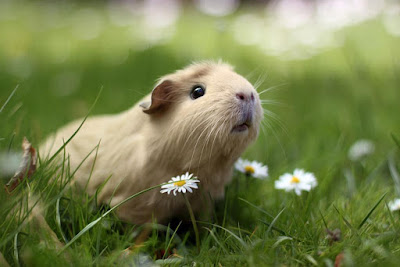
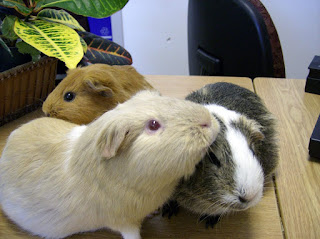
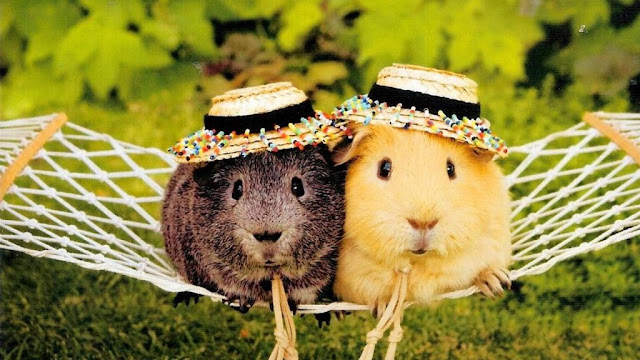
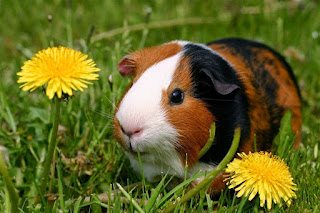
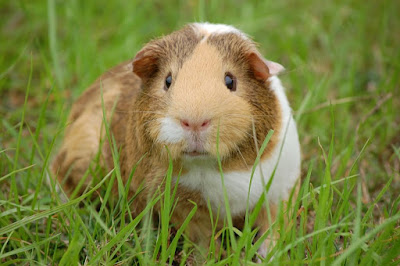
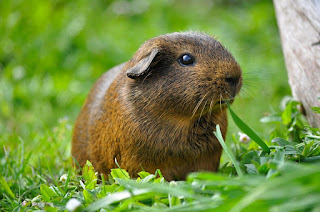
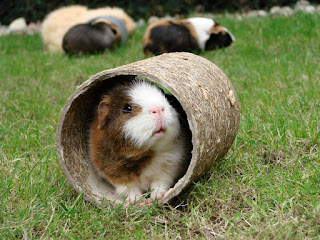













No comments:
Post a Comment